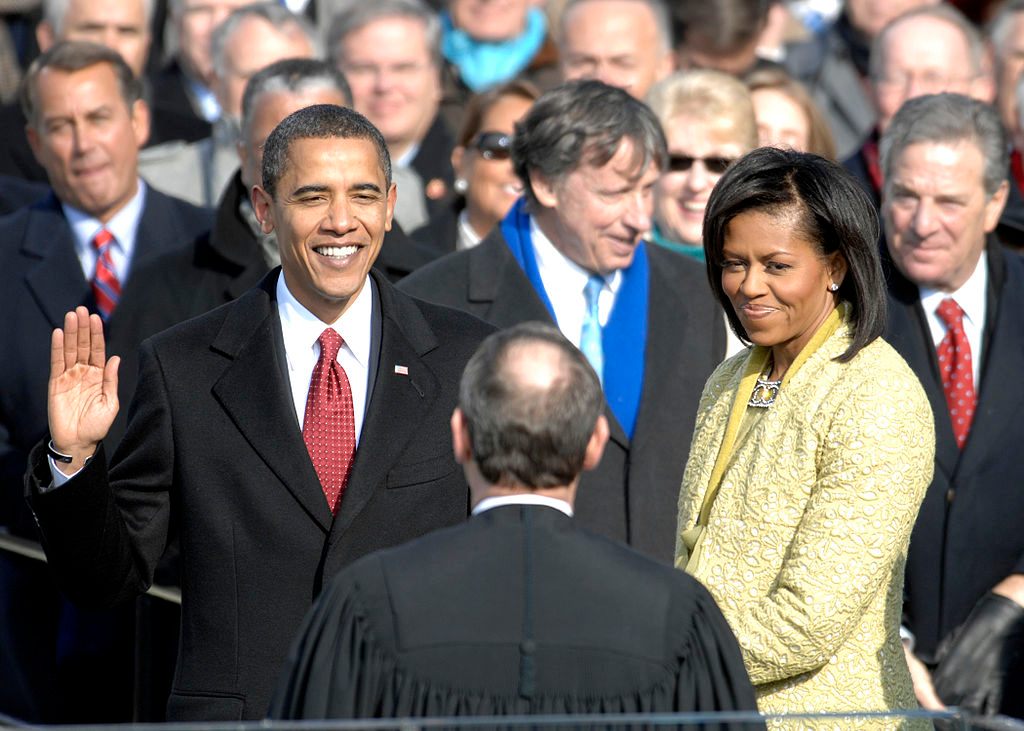Why Is Inauguration Day on January 20?
Until the Great Depression, lame duck presidents stewed for much longer.

On Friday, January 20, 2017, Donald J. Trump will be sworn into office as the President of the United States of America. In an earlier age, we would have been blessed with over an extra month of Obama. For better or worse.
Incoming presidents have been being sworn in on January 20 since 1936, usually in a massive ceremony, full of all the pomp and circumstance befitting the introduction of a world leader—unless the 20th falls on a Sunday, in which case they are sworn in privately, and the party is held on the following Monday). But this wasn’t always the case.
The original day of inauguration for both Presidents and Vice Presidents used to be March 4, but the date was pushed up to January with the passing of the 20th Amendment to the Constitution. With the exception of George Washington himself, who was sworn in on April 30, 1789, each of America’s leadership teams took office on March 4, or publicly on the 5th, observing the Sunday rule we still abide by today.

This gap between election and formal taking of office was initially put in place for a few reasons. For one, as the Constitutional Accountability Center pointed out in a post from 2009, collecting and tallying the vote used to take a great deal longer than it does today, with numbers having to be carried across the country via horse and buggy. Not to mention the time it took for a president-elect to relocate to the White House. The other reason for the delay, and the reason there remains a gap of a few months to this day, is that there a number of things that an incoming president needs to figure out, like cabinet positions, while the outgoing president needs to spend that time easing the transition and protecting their legacy.
However, when the transition time lasted four months, it created a number of problems. Probably the most glaring example of the bad things that can happen by leaving a “lame duck” president in office for too long is what has come to be known as the “Secession Winter.” During the long wait between the election that put President Abraham Lincoln in office and when he finally took office, Southern secessionists were able to seize federal arms and defenses and establish the Confederate States of America, kicking off the Civil War. Neither the sitting president, nor the president-elect seemed able to impede the separatists, and by April of 1861, the country was at war. This has often been attributed to the long lame duck period.

Surprisingly, the four-month gap remained in place well after the Civil War and into the 20th century. The downsides of the extended wait time would become apparent again in the 1930s after Democratic President Franklin Roosevelt defeated Republican President Herbert Hoover. During the uncertain time between their terms (from November 1932 to March 1933), The Great Depression was in full swing, and their inability of the two leaders to enact lasting economic reform worsened the trouble. However, even as this problematic gap was under way, action was being taken to shorten the lame duck period.
The 20th Amendment, which has been nicknamed “The Lame Duck Amendment,” was ratified in January of 1933. Among other things, this amendment shortened the time that politicians in both the Congress and the Presidency could remain in office after an election. The inauguration day for the president was moved to January 20, while the start date for Congress was bumped up even further to January 4. This two-week difference between the inauguration of new members of Congress and the incoming president was established to give Congress time to respond to a situation in which the regular voting process was unable to determine a president-elect, the candidate died, or some other scenario where there was no president to be sworn in.
Ever since, January 20 has become a day of either celebration or despair, depending on your political views. But no matter how you feel about the president being sworn in, at least you can be certain of when it will happen.







Follow us on Twitter to get the latest on the world's hidden wonders.
Like us on Facebook to get the latest on the world's hidden wonders.
Follow us on Twitter Like us on Facebook